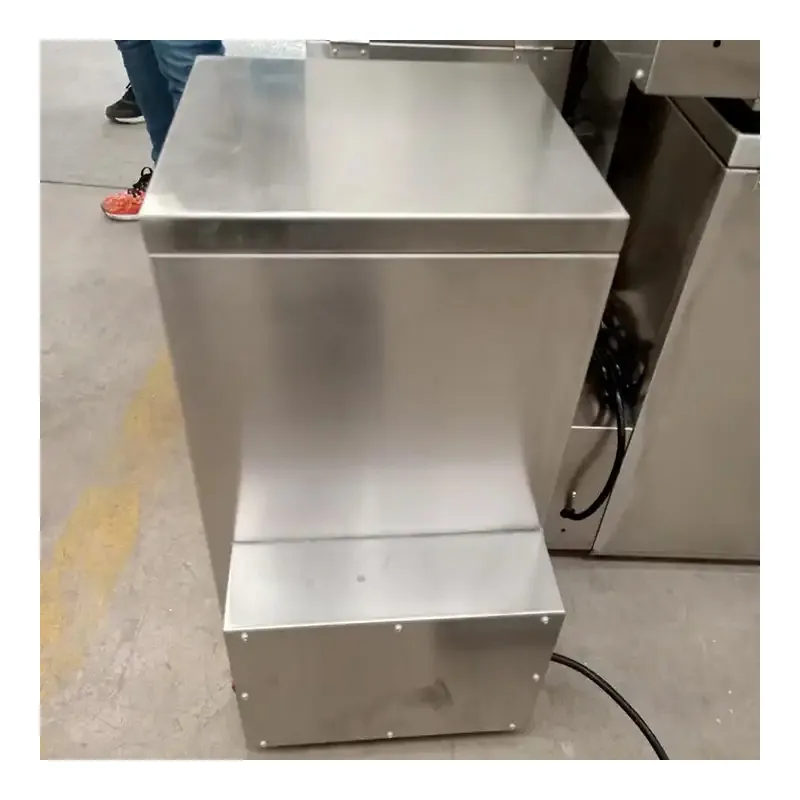Belt-Driven Exhaust Fan for Efficient Ventilation and Airflow Solutions
Dec . 26, 2024 05:32 Back to list
Belt-Driven Exhaust Fan for Efficient Ventilation and Airflow Solutions
The Benefits and Functionality of Belt Driven Exhaust Fans
In industrial and commercial settings, effective ventilation is crucial for maintaining a safe and comfortable environment. One prominent solution used in these applications is the belt driven exhaust fan. A belt driven exhaust fan utilizes belts and pulleys to transfer power from the motor to the fan blades, making it a versatile and reliable choice for numerous ventilation needs.
How Belt Driven Exhaust Fans Work
The functioning of a belt driven exhaust fan revolves around its mechanical design. The motor, often mounted separately from the fan assembly, drives a belt connected to a pulley that is attached to the fan blades. This setup not only allows for the efficient transfer of power but also provides flexibility in adjusting the fan speed by changing the pulley sizes. This feature enables operators to customize air flow rates according to specific ventilation requirements.
Belt driven exhaust fans are typically constructed using robust materials that can withstand harsh environments, such as high temperatures and corrosive conditions. Common designs include axial and centrifugal fans, both of which can effectively exhaust air, smoke, or fumes from various spaces.
Advantages of Using Belt Driven Exhaust Fans
1. Versatility and Customization One of the main advantages of belt driven exhaust fans is their versatility. They can be utilized in different applications, from warehouses and factories to kitchens and laboratories. The ability to adjust fan speed through pulley changes makes these fans adaptable to varying airflow needs.
2. Effective Airflow Control The belt drive system allows for better torque management and can drive larger fans or utilize multi-blade configurations, which enhance airflow efficiency. This feature is particularly important in areas requiring significant air changes to maintain indoor air quality.
belt driven exhaust fan

3. Noise Reduction Belt driven fans often operate more quietly than direct-drive fans, as the belt absorbs some of the noise generated by the motor. This is particularly beneficial in environments where noise levels must be kept to a minimum, such as schools, offices, or hospitals.
4. Reduced Motor Wear By decoupling the motor from the fan blade assembly, belt driven systems can reduce the strain on the motor during startup and operation. This can lead to extended motor life and reduced maintenance costs, making them a cost-effective option for businesses.
5. Maintenance Accessibility Belt driven fans are generally easier to maintain. The separate motor and belt system permit easier access for service and inspection without having to disassemble the entire fan unit, resulting in less downtime and lower operational costs.
Ideal Applications
Belt driven exhaust fans are particularly suited for a range of applications. In manufacturing settings, they are used to expel hot air, vapors from production processes, and other harmful contaminants. In commercial kitchens, these fans help eliminate smoke, grease, and odors, ensuring compliance with health and safety regulations. Additionally, they are commonly found in agricultural settings, where managing airflow is vital for climate control and livestock health.
Conclusion
In summary, belt driven exhaust fans are a practical and efficient solution for various ventilation challenges. Their ability to offer customizable airflow, quiet operation, and reduced wear on motors makes them a preferred choice in many industries. As businesses increasingly prioritize both operational efficiency and employee comfort, investing in quality belt driven exhaust fans is an intelligent decision that promises long-term benefits. For anyone looking to enhance their ventilation systems, these fans stand out as a testament to engineering practicality and reliability in the realm of air movement technology.
-
Hot Sale 24 & 18 Door Rabbit Cages - Premium Breeding Solutions
NewsJul.25,2025
-
Automatic Feeding Line System Pan Feeder Nipple Drinker - Anping County Yize Metal Products Co., Ltd.
NewsJul.21,2025
-
Automatic Feeding Line System Pan Feeder Nipple Drinker - Anping County Yize Metal Products Co., Ltd.
NewsJul.21,2025
-
Automatic Feeding Line System - Anping Yize | Precision & Nipple
NewsJul.21,2025
-
Automatic Feeding Line System - Anping Yize | Precision & Nipple
NewsJul.21,2025
-
Automatic Feeding Line System-Anping County Yize Metal Products Co., Ltd.|Efficient Feed Distribution&Customized Animal Farming Solutions
NewsJul.21,2025






